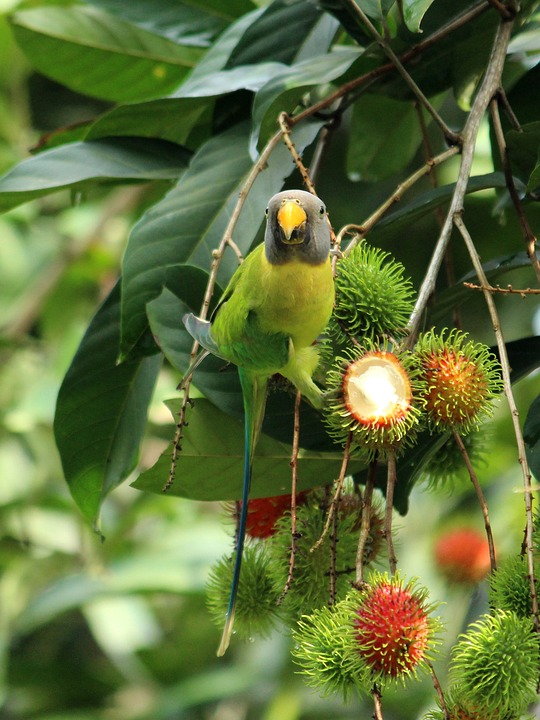*By [Your Name]*
Parrot training requires time, patience, and consistency. Just like any other training, establishing a schedule is crucial to maintain regular practice sessions and ensure effective learning for your feathered companion. In this article, we will guide you through the process of creating a parrot training schedule that suits your bird’s needs and promotes consistent progress. Additionally, we will address some frequently asked questions regarding parrot training. Let’s dive in!
**Why is a Training Schedule Important?**
Establishing a training schedule is vital for several reasons. Firstly, it helps you allocate dedicated time for training, ensuring you don’t overlook or neglect this essential aspect of your parrot’s well-being. Secondly, a consistent schedule helps your parrot develop a routine, making them more receptive to training and reducing stress levels. Lastly, a well-structured schedule enables you to track your parrot’s progress more effectively, identify areas of improvement, and celebrate achievements.
**Creating a Parrot Training Schedule: Step-by-Step Guide**
1. **Assess Your Parrot’s Needs**: Before diving into creating a training schedule, it’s crucial to understand your parrot’s specific needs, capabilities, and limitations. Consider their breed, age, temperament, and any previous training experience. This assessment will help tailor the training schedule to your parrot’s unique requirements.
2. **Set Realistic Training Goals**: Clearly define your training goals. Whether it’s teaching basic commands, overcoming behavioral issues, or advanced tricks, having specific objectives will guide your training schedule and keep you focused.
3. **Choose the Right Training Time**: Determine the most suitable time for training sessions. Parrots are generally more alert and receptive in the mornings and early evenings. Select a time when both you and your parrot are relaxed and free from distractions.
4. **Break Training into Short Sessions**: Parrots have limited attention spans, so it’s crucial to keep training sessions short and engaging. Aim for 10-15 minute sessions, twice a day, rather than long, exhausting ones. Frequent short sessions are more effective than infrequent extended ones.
5. **Include Variety in Training**: Keep your training sessions interesting and diverse by incorporating a range of activities. Alternate between teaching new commands, reinforcing old ones, and introducing exciting toys or puzzles that stimulate your parrot’s cognitive abilities.
6. **Maintain Consistency**: Consistency is key to successful parrot training. Stick to your schedule, and try to train at the same time every day. This regularity will reinforce your parrot’s learning, reinforce positive behaviors, and establish a stronger bond between you and your feathered friend.
7. **Monitor Progress and Adjust**: Continuously evaluate your parrot’s progress and adjust the training schedule accordingly. If a particular command is proving challenging, dedicate more time to it. If your parrot quickly masters a skill, gradually increase the difficulty level to keep them engaged and motivated.
8. **Reward and Reinforce**: Always reward your parrot’s achievements during training sessions. Positive reinforcement, such as treats, praises, or affectionate gestures, encourages your parrot to associate training with positive experiences, making them more eager to participate.
**Frequently Asked Questions (FAQs)**
**Q: How long will it take to train my parrot?**
A: The duration of parrot training varies depending on several factors, including the parrot’s age, breed, previous training experience, and individual temperament. Some parrots may learn quickly, while others may require more time and patience. Consistency and positive reinforcement are key to successful training.
**Q: Should I train my parrot every day?**
A: Training your parrot every day is ideal for consistent progress and maintaining routine. However, it’s important to ensure that training sessions remain short and engaging to prevent burnout and boredom. Allow your parrot to have rest days occasionally to avoid overwhelming them.
**Q: Can I train my parrot if it’s older?**
A: Yes, parrots of any age can be trained. While younger parrots may have a slightly faster learning curve, older parrots can also learn new commands and behaviors with patience and consistent training. Adapt the training schedule to accommodate their age-related needs.
**Q: What if my parrot becomes uninterested during training sessions?**
A: If your parrot loses interest during training, it may be a sign that the session is too long or repetitive. Break down the training into shorter, more dynamic sessions. Incorporate new toys, puzzles, or treats to keep your parrot engaged and eager to learn.
Creating a parrot training schedule not only benefits your feathered companion but also strengthens your bond and provides mental stimulation. Remember, patience and consistency are vital for successful training. Tailor your schedule to your parrot’s needs, set realistic goals, and celebrate every milestone achieved. Happy training!









